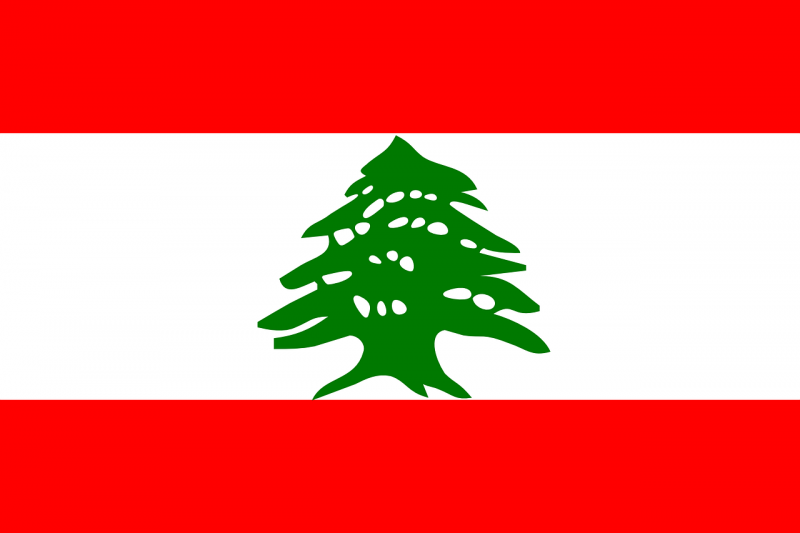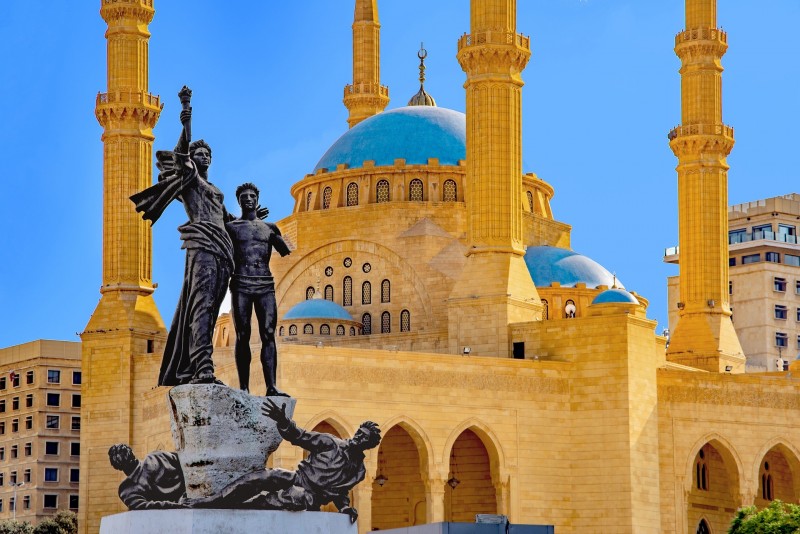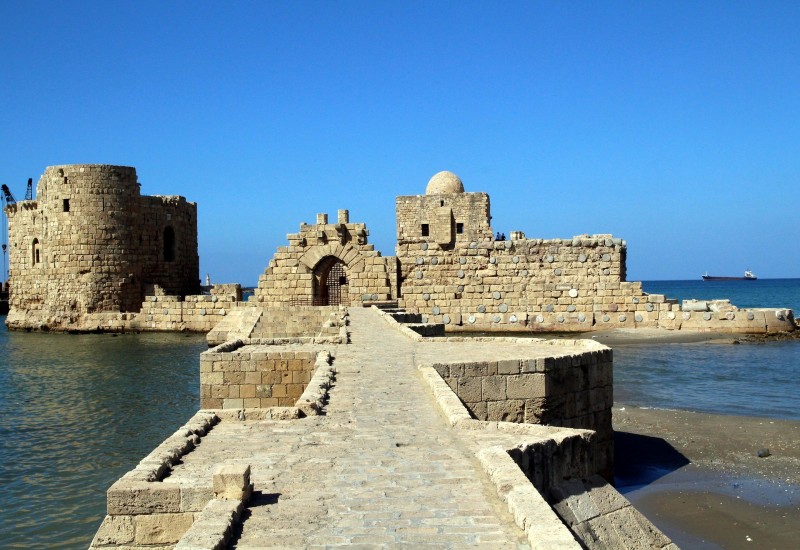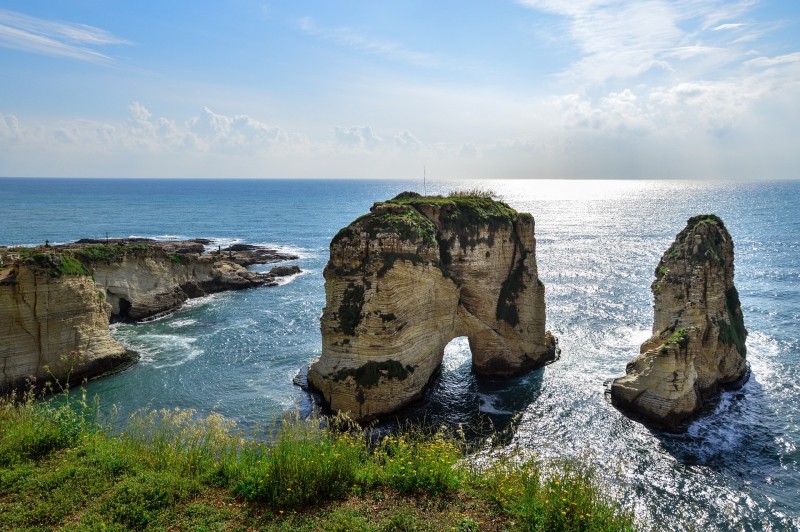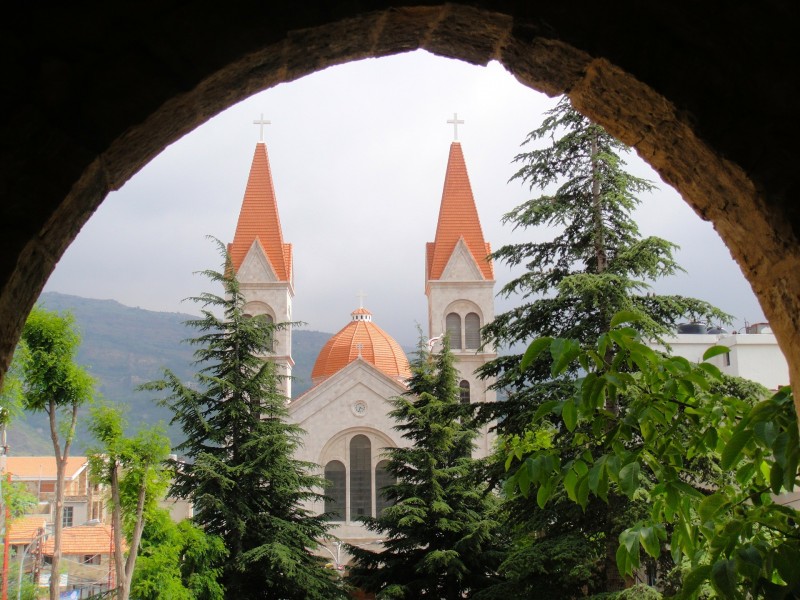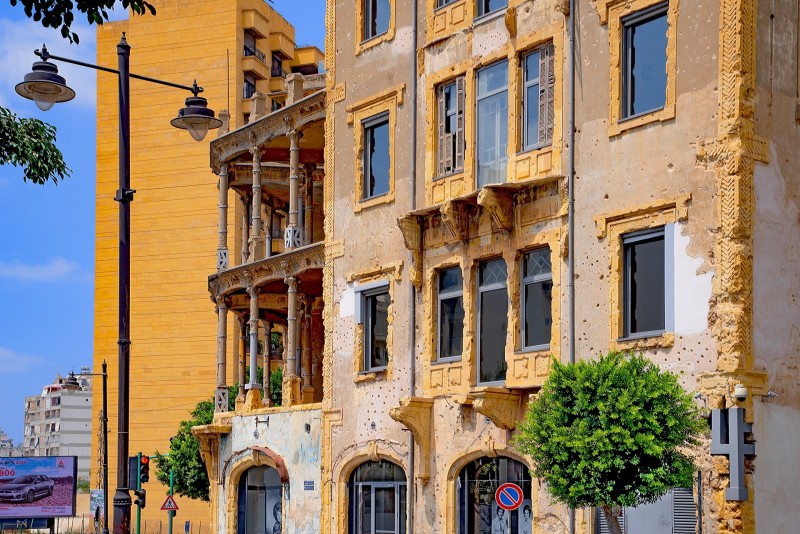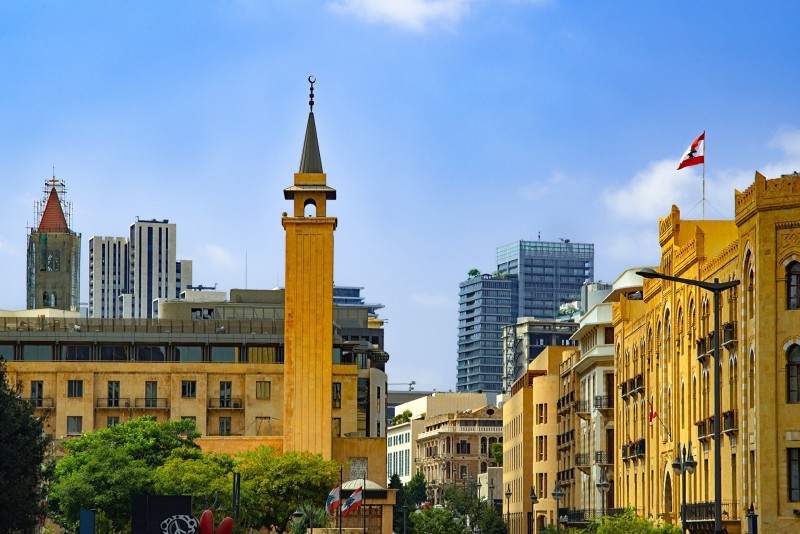Lebanon
Lebanon
Capital city description
Beirut is the largest city on Lebanon's central western coast on a peninsula surrounded by the Mediterranean Sea. Beirut's prominent cultural center is the National Museum, located on one of the former Green Line's most strategically important intersections. Exhibits span major eras from prehistory through the Mamluk period, and labels are easy to understand in English, French, and Arabic.
Highlights from the extensive collection include a pebble idol dating back to 9000 BC, gilded bronze Phoenician statuettes, marble statues from Echmoun, and a fabulous series of glimmering Byzantine gold jewelry.
Climate
Lebanon has a Mediterranean climate defined by a long, hot, dry summer and cool, rainy winter. Fall is a transitional season with a gradual lowering of temperature and little rain; spring happens when the winter rains cause the vegetation to revive. Topographical change creates local modifications of the basic climatic pattern. Along the coast, summers are hot and humid, with little or no rain.
- Spring: April - May
- Summer: June - September
- Fall: October - November
- Winter: December - March
Languages spoken
Lebanon’s official national language is Arabic. Moreover, several various languages are fluently spoken and used all over the country, and the other dominant languages are English, Armenian, French, and Kurdish.
Fun/Fascinating Facts
1. The country’s parliament is equally divided among religious groups; their president must be a Maronite Christian, the Prime Minister a Sunni Muslim, and the Speaker of Parliament a Shiite Muslim.
2. In Lebanon, since 1932, there is no census has been undertaken due to political sensitivity over religious affiliation.
3. Lebanon is a solely Arabian/Asian country that doesn’t have a desert.
4. Byblos is recognized as one of the oldest continuously occupied cities globally – people have been living there for 5,000BC!
5. In Lebanon, a piece of land can have two legal owners. The part of the land is owned by one, and the crop growing on the land is owned by another. So if you were to buy the piece of land, you would need to pay both these parties before you become the sole owner of the land.
Unique Customs/Traditions
- In Lebanon, TV time is divine, especially for parents and their eight o'clock news. However, society thinks that each local channel airs news differently, resulting in every household having both a favorite and disliked channel.
- Lebanese weddings have lots of customs and traditions. Weddings can last up to three days. The night before the wedding, there is a party, it starts with one in the groom's home and one in the bride's home, the groom then leaves his party and goes to the bride's party, but must leave before midnight. When the bride and the groom leave the bride's home, women gather there to give them blessings. The "Ah Weeeee-ha" and the "zalghouta" are the sounds that can be heard at every wedding. As sighs of joy, people throw petals and rice on the bride and groom.
- Lebanese cuisine is considered the Mediterranean, although it has some Asian roots. You can see Pita bread anywhere on the dining table as well as hummus, fool, shawarma, and other popular middle eastern dishes.
- Rice and pasta are staples in Lebanese cuisine as well as various salads. Pork is consumed; however, it is less vulgar than other foods since it's considered haram (forbidden) in Islam.
Popular universities
| Name | Description | |
|---|---|---|
| The American University | The American University of Beirut is a non-profit private higher education institution located in the urban setting of the metropolis of Beirut. This institution also has a branch campus in Bekaa. Founded in 1866 and officially recognized by the Middle States Commission on Higher Education, a coeducational Lebanese higher education institution. American University of Beirut (AUB) offers bachelor's degrees, master's degrees, doctorate degrees in several areas of study. | |
| Lebanese American University | Lebanese American University is a non-profit private higher education institution located in the urban setting of the metropolis of Beirut. This institution also has a branch campus in Byblos. Founded in 1924 and officially recognized by the Ministère de l'Education et de l'Enseignement supérieur, Liban (Ministry of Education and Higher Education of Lebanon), Lebanese American University is a coeducational Lebanese higher education institution. Lebanese American University (LAU) offers courses such as bachelor's degrees in several areas of study. | |
| Université Saint-Joseph de Beyrouth | Université Saint-Joseph de Beyrouth (Saint-Joseph University of Beirut) is a non-profit private higher education institution located in the urban setting of the metropolis of Beirut, established in 1875. This institution also has branch campuses in the following locations: Tripoli, Saïda, Zahlé. Officially recognized by the Ministère de l'Educ, ation et de l'Enseignement supérieur, Liban (Ministry of Education and Higher Education of Lebanon), Université Saint-Joseph de Beyrouth (USJ) is a large coeducational Lebanese higher education institution formally affiliated with the Christian-Catholic religion. Université Saint-Joseph de Beyrouth (USJ) offers courses and programs leading to officially recognized higher education degrees such as bachelor's degrees, master's degrees, doctorate degrees in several areas of study. | |
| Beirut Arab University | Beirut Arab University is a non-profit private higher education institution located in the urban setting of the metropolis of Beirut, founded in 1960. This institution also has branch campuses in the following locations: Debbieh, Tripoli, Bekaa. Officially recognized by the Ministère de l'Education et de l'Enseignement supérieur, Liban (Ministry of Education and Higher Education of Lebanon), Beirut Arab University (BAU) is a large coeducational Lebanese higher education institution. Beirut Arab University (BAU) offers courses and programs leading to officially recognized higher education degrees such as bachelor's degrees, master's degrees, doctorate degrees in several areas of study. | |
| Université Libanaise | Université Libanaise (Lebanese University) is a non-profit public higher education institution located in the urban setting of the metropolis of Beirut, founded in 1951. This institution also has a branch campus in Hadath. Officially recognized by the Ministère de l'Education et de l'Enseignement supérieur, Liban (Ministry of Education and Higher Education of Lebanon), Université Libanaise (UL) is a very large coeducational Lebanese higher education institution. Université Libanaise (UL) offers courses and programs leading to officially recognized higher education degrees in several areas of study. | |
| The University of Balamand | The University of Balamand is a non-profit private higher education institution located in El-Koura, North Governorate, founded in 1988. This institution also has a branch campus in Beirut. Officially recognized by the Ministère de l'Education et de l'Enseignement supérieur, Liban (Ministry of Education and Higher Education of Lebanon), University of Balamand (UOB) is a small coeducational Lebanese higher education institution formally affiliated with the Christian-Orthodox religion. University of Balamand (UOB) offers courses and programs such as bachelor's degrees, master's degrees, doctorate degrees in several areas of study. | |
| Notre Dame University | Notre Dame University is a non-profit private higher education institution located in Zouk Mosbeh, Mount Lebanon. This institution also has branch campuses in the following locations: Deir el Amar, Barsa. Founded in 1987 and officially recognized by the Ministère de l'Education et de l'Enseignement supérieur, Liban (Ministry of Education and Higher Education of Lebanon), Notre Dame University (NDU) is a small coeducational Lebanese higher education institution formally affiliated with the Christian-Catholic religion. Notre Dame University (NDU) offers courses and programs such as pre-bachelor degrees (i.e., certificates, diplomas, associate or foundation), bachelor's degrees, master's degrees, doctorate degrees in several areas of study. | |
| Université Saint-Esprit de Kaslik | Université Saint-Esprit de Kaslik (Holy Spirit University of Kaslik) is a non-profit private higher education institution located in Jounieh, Mount Lebanon. Established in 1950 and officially recognized by the Ministère de l'Education et de l'Enseignement supérieur, Liban (Ministry of Education and Higher Education of Lebanon). Université Saint-Esprit de Kaslik (USEK) is a medium-sized coeducational Lebanese higher education institution formally affiliated with the Christian-Catholic religion. Université Saint-Esprit de Kaslik (USEK) offers courses and programs leading to officially recognized higher education degrees such as bachelor's degrees, master's degrees, doctorate degrees in several areas of study. This institution also has branch campuses in the following locations: Zahle, Chekka, Reich, Jbeil. | |
| Lebanese International University | Lebanese International University is a private higher education institution located in the urban setting of the metropolis of Beirut, established in 2001. This institution also has branch campuses in the following locations: Tripoli, Saida, Bekaa, Nabatieh, Riyadh, Sana'a, Aden, Abu Dhabi, Damascus, Cairo, Alexandria. Officially recognized by the Ministère de l'Education et de l'Enseignement supérieur, Liban (Ministry of Education and Higher Education of Lebanon), Lebanese International University (LIU) is a vast coeducational Lebanese higher education institution. Lebanese International University (LIU) offers courses such as doctorate degrees in several areas of study. | |
| Haigazian University | Haigazian University is a non-profit private higher education institution located in the metropolis of Beirut.Established in 1955 and officially recognized by the Ministère de l'Education et de l'Enseignement supérieur, Liban (Ministry of Education and Higher Education of Lebanon), Haigazian University (HU) is a very small coeducational Lebanese higher education institution. Haigazian University (HU) offers courses and programs leading to officially recognized higher education degrees such as bachelor's degrees, master's degrees in several areas of study. | |
Festivals & Events
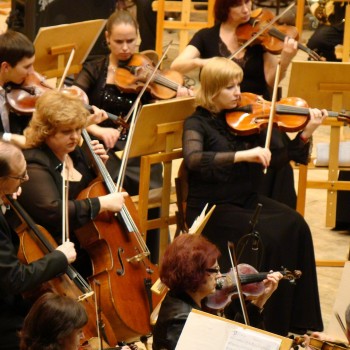
Baalbeck International Festival
Date: July - August
The Baalbeck International Festival is the classical and most renowned cultural event in the Middle East and the eastern Mediterranean. Cultural events such as classical music, opera, jazz, modern world music, Lebanese Nights, rock and pop music, and ballet and theater regained their past location with over 40,000 yearly witnesses watching in the unique historical setting of Baalbek.
It is performed each July and August in the ancient Roman Acropolis, one of the largest and well preserved Roman temples ever built. Dramatic lighting and a unique historical setting provide the background to the varied presentations. Highlights have included Deep Purple, Ella Fitzgerald, Nina Simone, Miles Davis, Sting, The Royal Ballet, and The New York Philharmonic Orchestra.

Byblos International Festival
Date: July
The Byblos International Festival is a Lebanese festival held in Byblos. The festival is one of the most significant in Lebanon and attracts thousands of tourists worldwide. The Byblos International Festival is a Lebanese festival held in Byblos.
The festival is one of the biggest in Lebanon and attracts thousands of tourists from all over the world. It takes place by the seaside in the historic quarter, in front of the castle built by Crusaders in the 12th century. The festival aims to promote tourism, strengthen the Lebanese culture, and spread music and art from the Middle East to the rest of the world.
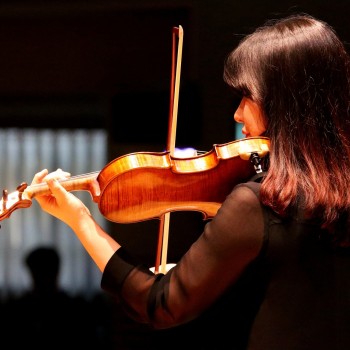
Al Bustan International Festival
Date: February
Al Bustan International Festival of Music and the Arts. In February, held annually in Beirut. The festival takes over the entire month. Spanning five weeks, everything from orchestral concerts, opera performances, and ballet dances are on offer for the public's enjoyment.
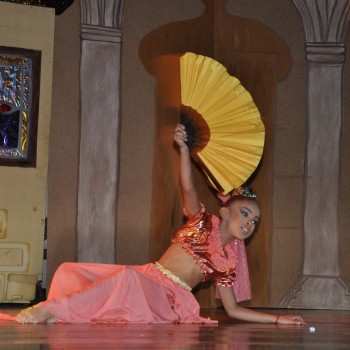
The Tyre and South Festival
Date: July
The Tyre and South Festival is held annually in July at and around the ruins of Tyre, with regards to a feast of Southern Lebanese culture. Activities have dance shows, poetry readings, musical performances, crafts fairs, and lectures on the region’s culture and history that everybody can enjoy.
Attractions / Top Sights
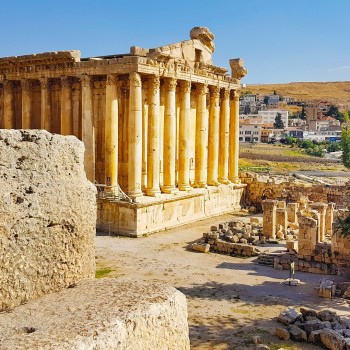
Baalbek
When to visit: In summer
When to visit: https://www.worldhistory.org/Baalbek/
Baalbek, also known as Heliopolis during the Hellenistic period, is an excellent tourist attraction in Lebanon Beqaa Valley and comprises valuable paragons of Lebanese fortunes. During 9000 BCE, Baalbek developed into a famous pilgrimage site in the ancient world to glorify the sky-god Baal and his consort Astarte, the Queen of Heaven in Phoenician religion (the name 'Baalbek' means Lord Baal of the Beqaa Valley). The center of the city was a great temple dedicated to Astarte and Baal. UNESCO lists Baalbek as a World Heritage Site.
Amongst the constructions, the Temple of Bacchus is the finest reserved old shrine with lofty towers. Annually, the area arranges the Baalbek International Festival, which international organizations and artists patronize to work on the remains of the medieval city.
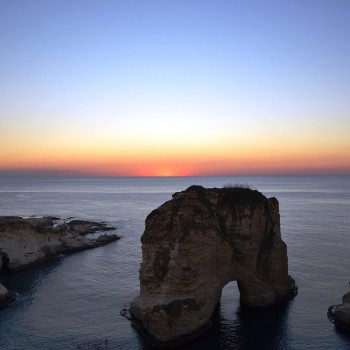
Raouche Pigeon Rocks
When to visit: November to April
The Raouchè Pigeon Rocks is one of the natural wonders and an excellent tourist attraction you can see in Lebanon. A romantic spot, sunset, and breathtaking set of rocks, the Raouchè Pigeon Rocks beckon travelers as they arrive in Lebanon’s epicenter town.
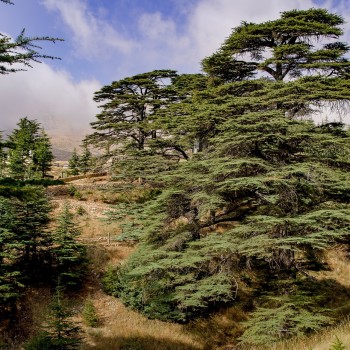
Kadisha Valley
When to visit: Between May and September
When to visit: https://whc.unesco.org/en/list/850
Kadisha Valley ( Qadisha Valley) is named the Holy Valley for its utmost religious importance and is deemed one of the world's most important early Christian monastic settlements.
It was listed as one of the World Heritage Sites in 1998. Kadisha Valley is surrounded by the jungles of Cedar woods and with snow-covered cliffs on either side; it is an excellent spot for outdoor holidays ventures.

Main square
When to visit: Between May and September
The main square is the historical central public square of Beirut, Lebanon. It showcases fine Arab architecture, including the Mosque of Emir Fakhreddine Maan, established in 1493, and a cobbler's behind it souq housing touristy shops.
Beyond and behind the souq is a beautiful silk khan constructed in 1595 that now houses a cultural center. Nearby are the buildings that once housed a Jesuit school and a synagogue and the Palace of the poet Nicolas El Turq, a cafe on its ground floor.
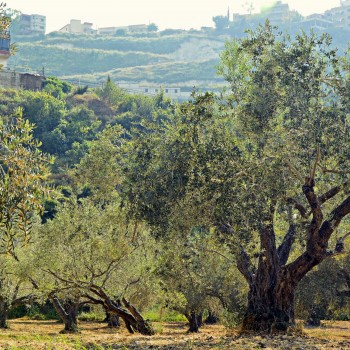
Shouf Biosphere Reserve
When to visit: In summer and spring
When to visit: https://www.iucn.org/news/protected-areas/201804/wonders-shouf-biosphere-reserve%C2%A0lebanon
Al-Shouf Cedar Nature Reserve, reckoning for a quarter of the remaining cedar forest in Lebanon, was listed as a Biosphere Reserve by UNESCO in July 2005. Shouf Biosphere Reserve, the largest of Lebanon's three natural territories, covering an incredible 5% of the total land area, is the country's most comprehensive natural cedar reserve and has more than 250km of hiking trails.
There are several entrances, all with short-distance hiking trails to observe the cedars and access to longer trails. It's lovely to see these beautiful trees in their natural environment, and the cool mountain climate makes a welcome change from the scorching coast.
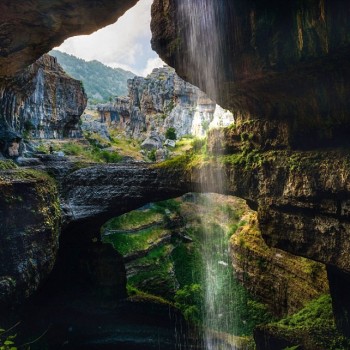
Baatara Gorge Waterfall
When to visit: March and April
When to visit: Baatara Gorge Waterfall
The Baatara Gorge Waterfall in Tannourine is another exalted tourist attraction in Lebanon. It is considered one of the most charming waterfalls in the world. It was ‘discovered’ by Henri Coiffait in 1952 and was thoroughly mapped out in the 1980s, at which point it was known as the Cave of Three Bridges.
Besides the beautiful waterfall and its fresh waters where you can enjoy a dip, the Baatara Gorge Waterfall brags about natural rock developments, which geologists think were developed millions of years ago.
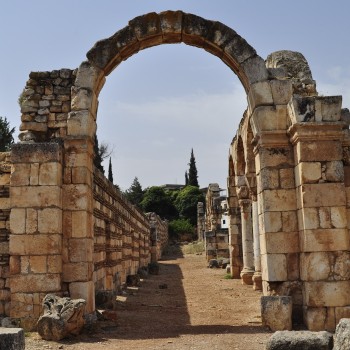
Tyre
When to visit: April to June
Located in the country's southern area, Tyre is a tiny city, a well-liked tourist destination, initially built on stone base formations that reflect the old remains of a beautiful business center. It is an ancient Phoenician town and is notable for its conventional sites, including relics, Roman theatres, and seaports dating back to as far back as 2750 BC.
Presently, Tyre is a bustling port city with all the facilities of a present-day arrangement, and it's also a fantastic tourist attraction in Lebanon.

Byblos
When to visit: March to May or October to November
When to visit: https://www.worldhistory.org/Byblos/
Byblos is the ancient Phoenician port city of Lebanon that has uninterruptedly populated over the years. It is recommended to be the first-ever town constructed under the Phoenician dynasty and is a World Heritage Site now.
The city brags about its rich history and is an important archaeological site. The relics of Crusader Castle are a wonderful tourist attraction where people can stroll around the cobblestone paths and old stone residences.















